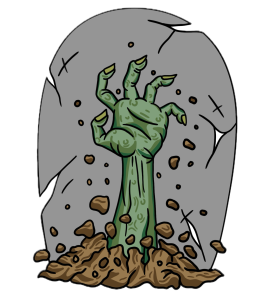Letter to the editor: A veteran’s sacrifice and the Whitman College memorial plaque
November 7, 2019
A small plaque honoring Whitman alumni killed in action during World War II hangs on a wall on the first floor of the Memorial Building. On that plaque are the names of 29 young patriots whose lives were lost defending liberty. One of the names on that plaque is Katherine Applegate, who was born in Walla Walla, lived for a time on Boyer Avenue near Wildwood Park, then charted an incredible course in life that fulfilled her self-selected high school graduation motto of, “She had just as much fun as if she had good sense”.
It was 75 years ago on the evening of November 26, 1944, when aviator Lt. Katherine Applegate Dussaq, a member of the Women Airforce Service Pilots (WASP) lifted off from a Maryland Army Air Corps military base bound for her home base near Cincinnati, solo as usual in the front seat of the North American T-6 Texan advanced trainer/combat aircraft. She had spent her day in Washington D.C. attempting to dissuade the Army Air Corps leadership and the U.S. Congress from deactivating WASP, or at least convincing them to give outgoing members of WASP commercial flight licenses.
WASP was a civilian flying organization whose primary mission was to “free up men” for combat duty by ferrying all types of aircraft, including bombers, from U.S. factories to continental U.S. bases, providing target towing for gunnery practice, testing aircraft and training other pilots. Unlike its Army (WAC) and Navy (WAVE) counterparts, members of WASP had neither official military status nor military benefits.
The weather that night was problematic for an aircraft of that era – cloudy with light rain with ground temperatures between 28 and 40 degrees Fahrenheit. Visibility was limited, and airframe icing a possibility.
Katherine was an experienced pilot with hundreds of solo hours in the AT-6, America’s number one advanced training combat aircraft. The aircraft’s Pratt and Whitney engine could produce 600 horsepower and propel the aircraft at 250 miles per hour up to an altitude of 22,000 feet. As with all aircraft of that era, instrumentation was limited to monitoring basic engine performance, airspeed, altitude, fuel and oil status. Navigation was primarily by dead reckoning and the use of a compass. Although the AT-6 had tandem seats, WASP pilots almost always flew solo.
The flight from D.C. to Dayton, Ohio, was about 400 miles so Lt. Dussaq should have landed three hours after taking off. Instead she crashed into a field near New Castle, Ohio, 72 miles short of her destination; she died on impact.
She was only 38 years old, but her short life had already been filled with accomplishments and adventures.
Katherine and her family moved from Walla Walla to the small central Washington farming community of Harrington when she was in grade school. Always willing to share her opinion, even as an 8th grader, she was the author of numerous letters and articles to her local newspaper, the Harrington Citizen. One submission from 1917, entitled “Why the American People Should Conserve Food,” concluded with, “Why can’t our patriotism tell us … we must reduce our consumption of wheat so that we do our part in this war for ‘Liberty and Justice for all’ and to keep that freedom which was so gallantly won in 1776?”
In 1922, as a high school senior, Katherine won first prize at the annual northeast Washington oratorical contest. Her oration, “Universal Democracy” was, in the words of the reporter, “one of the best ever given in Harrington. Not only was the subject matter of high order, but Miss Applegate was easily the best in this field in the point of delivery.”
Though several Applegate family members did attend Whitman College, Katherine chose the State College of Washington (now WSU); after one year she transferred to Stanford University for her undergraduate degree. Stanford, however, postponed conferral of the degree for 6 months as punishment for Katherine and her cousin’s widely celebrated stow away on a Maui-bound steamer in the late spring. Katherine, unrepentant, was quoted extensively in both Honolulu and San Francisco newspapers. She told reporters, “after three hours at sea mingling in the social hall, our fear of being caught seemed a pathetic illusion – we longed for nothing more than to be apprehended. Hunger drives people to terrible lengths. It drove us to the purser.” The two young women were treated as royalty by the all-male crew and returned from Honolulu to San Francisco two weeks later with tickets purchased by their parents. Life, however, was soon to take a turn toward more serious matters.
In San Francisco, Katherine met and married the co-inventor of the polygraph (lie detector), Leonarde Keeler. She herself became a trained forensic detective and a member of the staff of the scientific crime detection laboratory at Northwestern University. She served as an expert for numerous high profile murder cases and established the first U.S. all female detective agency. An encounter with a handsome Argentina-born American war hero, Rene Dussaq, would lead her in a different direction.
Dussaq had made a name for himself in Hollywood by nurturing his WWII exploits; his good looks and charm made him a sought after escort. In 1942, Katherine married him. Their marriage was tumultuous and often carried on long-distance, but significantly, Katherine now had the financial resources allowing her to pursue a life-long dream – flying lessons.
The world was at war; freedom was at risk. Always a patriot, she matched her skills with the country’s military needs. She applied for and was accepted into the Women Airforce Service Pilots.
Lt. Katherine Applegate, though there is no official record of your attendance at Whitman College, we who did attend Whitman are proud nonetheless to have your name on our memorial plaque. Thank you for your service.
Eric S. Johnson, MD
Class of 1972
Colonel, USAF (retired)





